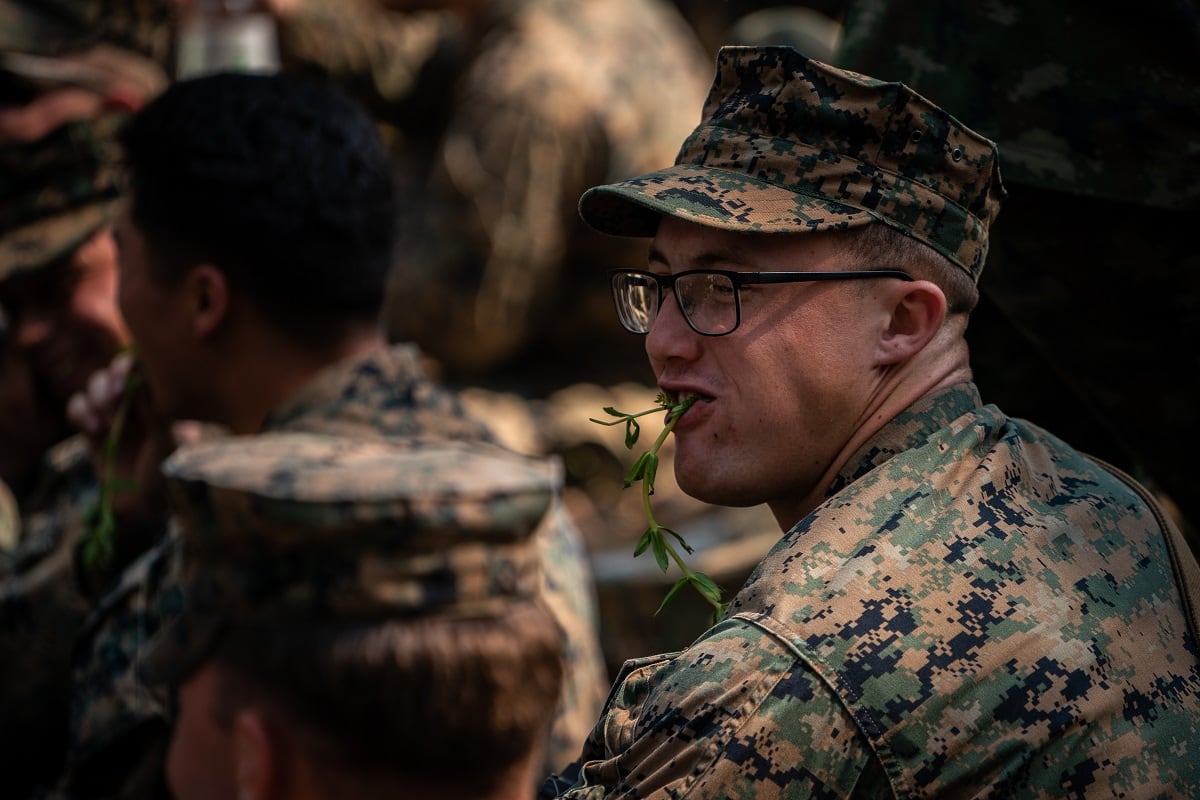It has been a long time since the U.S. military truly has had to worry about logistics.
During the nearly 20 years of war in the Middle East, Marines could be fairly certain they would be stocked on food. Whether that meant Burger King or the vegetable omelet meal, ready-to-eat, going hungry was not a main concern for the average grunt, even in Afghanistan.
But the Marine Corps is now preparing for a different fight, one that would see small teams of Marines spread out across the South Pacific, facing a so-called near peer enemy capable of annihilating the Marine Corps’ logistics train.
To help prepare Marines for that new fight, the Corps has added a foraging class to The Basic School’s curriculum, where young Marine officers will learn how to catch and prepare their own food.
“It’s not something new, it’s something that we’ve always done historically to win and fight wars, but it’s one thing we stopped doing when we went to packaged operational rations,” Chief Warrant Officer Lisa Figueroa, the deputy food service officer at Marine Detachment Fort Lee, Virginia, said in a video about the foraging class.
RELATED

Even with an intact supply chain, small units of Marines would rely on stealth to survive ― and a food resupply point could be a dead giveaway to positioning.
Then-Lt. Gen Eric Smith said in August at the 2021 Sea-Air-Space conference, “The first thing about being able to handle a logistics enterprise support you in a distributed environment is need less.”
“Why would I move water to the South China Sea?” asked the former commander of the Marine Corps Combat Development Command and the deputy commandant for combat development. “That’s insane, why would I move food? It’s called expeditionary foraging.”
Smith has since been promoted to general and made the assistant commandant of the Marine Corps.
So far 800 Marine have taken the course at The Basic School and the fourth iteration is set to take place on Dec. 13, 1st Lt. Phillip Parker, a Training and Education Command spokesman, told Marine Corps Times.
The Corps is still developing the class curriculum, Parker said, but currently it takes place in a single day.
Marines are given a one-hour lecture then spend another four hours in “practical application,” Parker said in a Tuesday email.
At the in-the-field portion, Marines take turns butchering fish and pigs, a video on the new class said.
“Fish and pigs are just a method by which we teach the students to have a flexible mindset in regards to logistics,” Maj. Patrick Fitzgibbons, with Warfighter Instructor Battalion, said in the video. “They need to consider augmenting their resupply with local resources in order to sustain their force.”
So far only entry level officers have been exposed to the class, but something similar may be coming to the enlisted entry level training pipeline, Parker said.
“As The Basic Officer Course continues to develop this nascent training and shares lessons learned, Training Command will implement best practices where appropriate throughout the entry-level enlisted training process,” Parker said.
While this is the first formal training class the Marine Corps has given on the course, in recent years foraging has taken a larger role in various training exercises.
In December 2019 Marines with the 31st Marine Expeditionary Unit headed to the island of Tinian, Northern Mariana Islands, to hide from a simulated enemy and conduct self sufficient logistic operations.
With the focus on the Pacific, it may not be too long before hunting and gathering becomes a key part of Marine Corps entry level training.
“As the curriculum continues to evolve, this training will be an enduring part of the Basic Officer Course as TBS introduces new officers to the concepts for how to fight and win in a distributed logistical environment,” Parker said.




